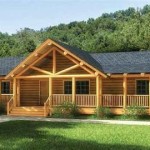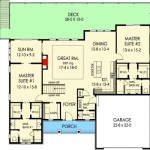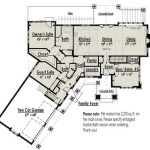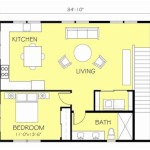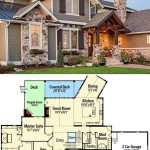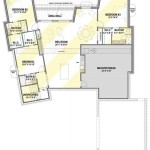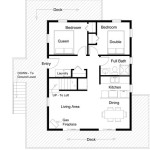Home Plans Under 500 Square Feet: Maximizing Space and Minimizing Footprint
The rising costs of housing, coupled with a growing interest in minimalist lifestyles and sustainable living, have propelled the popularity of small homes. Specifically, home plans under 500 square feet are gaining traction as viable and attractive housing options. These compact dwellings present a unique challenge and opportunity: to design functional, comfortable, and aesthetically pleasing living spaces within a significantly limited footprint. This article explores the key factors to consider when planning and designing a home under 500 square feet, focusing on space optimization, design considerations, and the potential benefits of this housing choice.
Designing a home of this size requires careful planning and prioritization. Every square inch must be considered and utilized effectively. The goal is to create a space that feels larger than its actual dimensions while meeting the essential needs of the occupants. This necessitates a departure from traditional notions of home design and an embrace of innovative solutions.
Prioritizing Functional Zones and Multipurpose Spaces
In a small home, the traditional separation of rooms becomes less feasible. Instead, designing for functional zones that can serve multiple purposes is crucial. For example, a living area can easily transform into a dining space or even a guest sleeping area. The key is to identify the core functions needed in the home and then find ways to integrate them efficiently.
Consider the use of convertible furniture. A sofa bed provides seating during the day and transforms into a bed at night. A dining table can double as a workspace. Folding chairs can be stored away when not in use. Choosing furnishings that adapt to different needs helps to maximize the utility of the limited space.
Vertical space is another important consideration. Lofts can be used for sleeping areas, storage, or even a quiet workspace. Built-in storage solutions that extend to the ceiling can maximize storage capacity without taking up valuable floor space. Utilizing the full height of the walls is a key strategy for creating a sense of spaciousness and order.
Defining zones can also be achieved through subtle architectural details. Changes in flooring material, variations in ceiling height, and the use of strategically placed partitions can help to delineate different areas within the open floor plan. These visual cues can create a sense of separation and definition without completely closing off the space.
Consider the specific needs and habits of the occupants. A single individual may prioritize a larger workspace, while a couple may require more storage for shared belongings. Tailoring the design to the specific user is essential for creating a comfortable and functional living environment.
Optimizing Layout and Flow
The layout of a small home is critical to its usability and comfort. An efficient flow of movement throughout the space is essential for preventing a feeling of claustrophobia. Open floor plans are generally preferred, as they allow for greater flexibility and a more expansive feel. However, careful consideration must be given to the placement of furniture and appliances to ensure that traffic paths remain clear and unobstructed.
The kitchen area often presents a significant challenge in a small home. Compact appliances, such as apartment-sized refrigerators and combination microwave-convection ovens, can help to save valuable counter space. Creative storage solutions, such as pull-out shelves and vertical organizers, can maximize the usable space within cabinets. A well-designed kitchen should be functional and efficient, even within a limited footprint.
The bathroom, though small, should not be overlooked. Wall-mounted sinks and toilets can save floor space and create a more open feel. Showers are generally preferred over bathtubs, as they occupy less space and are more water-efficient. Proper ventilation is crucial for preventing moisture buildup in a small bathroom.
Natural light is an essential element in any home, but it is particularly important in a small space. Large windows and skylights can help to make the space feel brighter and more open. Light-colored walls and ceilings can also reflect light and create a sense of spaciousness. Strategic placement of mirrors can further enhance the effect of natural light.
Consider the orientation of the home on the property. Maximizing sunlight exposure can reduce the need for artificial lighting and improve the overall energy efficiency of the home. Careful attention to the prevailing winds can also help to improve natural ventilation.
Incorporating Design Elements for Spaciousness and Comfort
Beyond the layout and functional zones, specific design elements can significantly enhance the feeling of spaciousness and comfort in a small home. These elements focus on creating visual and tactile experiences that make the space feel larger and more inviting.
Color plays a crucial role in the perception of space. Light and neutral colors tend to make a room feel larger and more open, while darker colors can make it feel smaller and more confined. Using a consistent color palette throughout the home can create a sense of visual continuity and flow.
Texture is another important consideration. Incorporating a variety of textures, such as natural wood, woven fabrics, and smooth metal, can add depth and interest to the space. However, it is important to avoid overwhelming the space with too many textures. A balanced approach is key to creating a harmonious and inviting environment.
Minimalism is a key principle in small home design. Clutter can quickly make a small space feel cramped and disorganized. Embracing a minimalist lifestyle involves decluttering possessions and focusing on essential items. Storage solutions should be designed to keep belongings organized and out of sight.
Outdoor space can be an extension of the living area in a small home. A well-designed patio, deck, or garden can provide additional space for relaxation, entertaining, and dining. Connecting the indoor and outdoor spaces through large windows or sliding doors can further enhance the feeling of spaciousness.
Finally, personalization is essential for making a small home feel like a true reflection of the occupants' personalities and tastes. Incorporating personal artwork, photographs, and other decorative items can add character and warmth to the space. However, it is important to avoid over-decorating, as this can contribute to a feeling of clutter.
Living in a home under 500 square feet offers several potential benefits. The smaller footprint translates to lower construction costs, reduced energy consumption, and a decreased environmental impact. The minimalist lifestyle that often accompanies small-home living can also lead to greater financial freedom and a stronger sense of community.
However, it is important to acknowledge the challenges of living in a small home. Space limitations require careful planning and organization. Compromises may be necessary in terms of storage, amenities, and entertaining options. It is essential to carefully consider one's lifestyle and needs before committing to a small-home design.
Ultimately, a home under 500 square feet can be a viable and rewarding housing option for individuals and couples who are seeking a simpler, more sustainable lifestyle. By embracing creative design solutions and prioritizing functionality, it is possible to create a comfortable, stylish, and personalized living space within a remarkably small footprint. The key is to approach the design process with careful planning, a focus on space optimization, and a commitment to minimalism.

500 Square Foot Smart Sized One Bedroom Home Plan 430817sng Architectural Designs House Plans

Single Bedroom House Plans With Staircase Under 500 Sq Ft For 120 Yard Plots Small Hub

500 Square Feet House Plan Construction Cost Acha Homes

500 Sq Ft House Plans Small Floor

Single Bedroom House Plans With Staircase Under 500 Sq Ft For 120 Yard Plots Small Hub

20 Awesome 400 500 Sq Ft House Plans Photograph Tiny Floor Small

Life In A Tiny Home Small House Plans Under 500 Sq Ft

Small House Floor Plans Under 500 Sq Ft Houseplans Com

High Resolution House Plans Under 500 Square Feet 7 Small Sq Ft Tiny Floor

500 Sq Feet House Design Small Home Plans Make My

